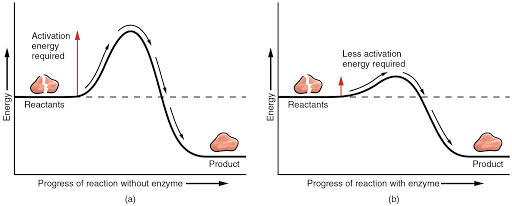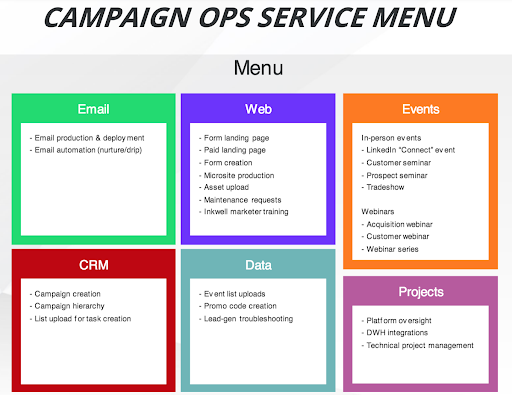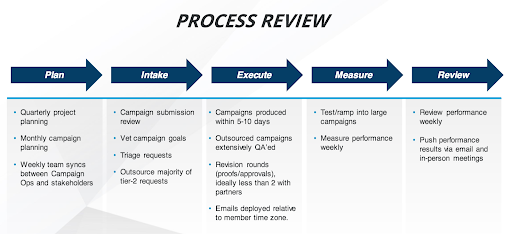To ensure a successful outcome, it's critical to hit the ground running when starting a new project. But getting started is often the hardest part. It takes an incredible amount of coordination, effort, and energy to get the ball rolling.
In chemistry, the amount of energy required for a chemical reaction to start working is called activation energy. You can think of it like that initial hump that needs to be overcome before momentum can take over. To make getting over that hump easier, compounds called enzymes are often introduced. These serve as catalysts, drastically reducing the energy needed for chemical reactions.

The Catalyst for Strong Project Kickoffs
Kicking projects off with all the essential information and people in place is the catalyst to conducting successful projects and retaining clients, reducing the amount of activation energy your team needs to get started and stay on track from start to finish. It brings clarity and focus to the work, eliminates miscommunication, and ensures everyone is alignment from day one.
We reached out to Michael Villareal, Campaign Operations for Marketing Group Manager at LinkedIn, to get insights on how they ensure every project gets off on the right foot.
5 Ways to Reduce Activation Energy and Start Your Projects off Strong
1. Align your team around a shared vision and values
At Wrike Collaborate, our annual user conference, Ashleigh Shapiro explained that “collaboration starts with buy-in.” Getting buy-in, or the approval and commitment of all involved, is a critical first step that will guide and influence all team behavior and decision-making.
“Establish a mission and ensure it's clear to your team and stakeholders,” says Villareal. The team at LinkedIn call these guiding principles Vision to Values. By aligning your team members around a common cause and making sure everyone's on board, you'll encourage them to take actions that are in line with your objectives and advance your shared goals.
2. Develop a service menu
If your team serves other parts of the organization and receives incoming work requests, it's critical that you develop a clear “menu” with each specific resource, asset, or service your team can provide. This can help prevent miscommunications, limit scope creep, and help you get the people, technology and resources you'll need to deliver the request together quickly.
“Once the mission is established, treat what you do as a service and develop a menu. Wrike request forms are key to complement a team's menu,” says Villareal.

The menu of LinkedIn's marketing operations team clearly lists the services the team provides and groups them together by format, channel, or type. This organization makes it easy for them to quickly identify the needs of the project and who/what will be involved in realizing it.
3. Define the process
Once you've identified your service offerings, the next step is to map out every step for each offering along with the estimated time each step will take to complete. This increases clarity for all involved and will help your team give accurate forecasts for how long a project will take to complete.

Your processes may seem pretty straightforward, but they need to be reviewed very granularly before you put them into your work management system.
And it doesn't stop there for the team at LinkedIn. Each process is evaluated at regular intervals to determine if there is any room for improvement or optimization. A few questions that are asked:
- How will the experience be for users?
- Where should commenting and feedback happen?
- Who updates what, when?
Keeping your processes documented and optimized will reduce any wasted cycles spent wondering what to do next.
4. Require a formal submission for all requests
Managing work requests that come in through emails, instant messages, and hallway conversations is unwieldy, time-consuming, and impossible to pull off as your organization scales. Without a formal process, it's difficult to establish accountability for the work and even harder to bring clarity to the greater org.
Choose a specific channel for submitting work requests and outline the entire process for your organization step by step. It's critical that you hold everyone in the org accountable for using this process to get it to stick. Not having to remember where the project details are in your Slack messages or which team members were copied on the email will dramatically cut down on miscommunications and get your team in sync faster.
Setting up a request form as part of your work intake process can benefit your team in three critical ways:
- Forms help you to collect all the information you need upfront to begin work, from the person or people who understand the request the best.
- They enable your team to begin working as soon as possible.
- They require the requestor to be specific about what exactly needs to be done, keeping the scope of the project focused.
The marketing operations team at LinkedIn use Wrike's dynamic request forms to start all of their projects. “If a request isn't submitted via Wrike, it will not be processed,” explains Villareal.
One of the powerful features of Wrike's dynamic request forms is the ability for conditional branching. Conditional branching allows you to get the right information, to the right person, in the right place:
Right information - Requesters are dynamically asked questions, based on previous answers, to collect specific details.
Right Person - Appropriate project owners are automatically assigned based on the type of work requested.
Right Place - Projects are created and housed in the right folder for the designated team or department.
Now that incoming work requests come in through a single, manageable channel and in a consistent format, the next step is to optimize the execution of repeatable work through templates. In Wrike, inbound requests submitted through a request form can automatically be turned into a templatized project.
5. Build a template library
One of the easiest ways to reduce activation energy is to use templates. Templates allow you to simply duplicate projects instead of starting them from scratch. For each item on your services menu, create a series of templates that take into account the project type, project duration/complexity, and the project team.
Make sure to include not just the tasks that need to happen, but also their timing, assignees, sequence, and any supplemental docs, assets, and instructions so that everything is in one convenient place. By giving everyone access to project resources, you can drastically reduce unnecessary back and forth and make onboarding new team members a breeze. You can find a collection of free project templates here.
The Formula for Unstoppable Momentum
New projects can feel daunting, and without clear direction, they can leave your team feeling paralyzed. Start your projects off strong by aligning around a common vision, defining your specific service offerings, formalizing your processes, creating a work intake system, and building a library of templates. By reducing the amount of activation energy your team needs to get moving, you'll set a positive tone for the project and build unstoppable momentum.




